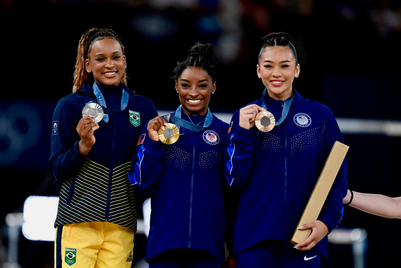
If a brand wants a fast way to reach their audience, sports cuts across culture, language and politics. When you throw in the potential for connection with people’s passions and for long-term engagement, then nothing beats sports. Top sports have fan bases that span the world and are growing in numbers.

Every four years, the world is brought together by the ultimate sporting event in the form of the summer Olympics, where global TV viewership exceeding 3 billion for the previous three Olympics (before Tokyo 2020). When you add the additional online viewers from streaming coverage, the total is truly global and mass in reach.
Tokyo 2020 was marked by uncertainty, but global sponsors still continued with their partnerships, and we saw a range of global and local brands participate. Toyota chose to honour their partnership, but did not run Olympics related TV ads during the Tokyo games. This was in deference to the majority Japanese sentiment not supporting the games continuing.
Brands considering sports sponsorships might grapple with how to approach such a large and wide topic and what is the right tenure of the sponsorship.
Questions to ask of your sports sponsorship to get started
Brands planning long-term sports sponsorships or shorter-term partnerships could consider the following as they shortlist their sport, league, or tournament:
-
How much reach is enough reach? Are your targets global, regional or local? How much budget have you allocated to reach these targets?
-
Do you have a specific audience for your brand? Defining clearly if you need to address mass or go niche will allow you to compare the sport’s audience with your target audience requirements.
-
Do you know your customer journey? What part of the journey do you most need your sponsorship to work hardest at delivering?
-
Does your brand have a natural affinity for any sport or player or a cause that is strategically important to support?
-
How do you want to be differentiated from your competition? Are there competitors in your category that also sponsor similar sports?
-
What opportunities do you want to ensure you are able to embed your brand in? Do you have a product or platform that might be used by players or the tournament?
-
What entitlements mean the most for your objectives? Determine the ideal value exchange for your brand. For any sponsorship, and particularly high-priced worldwide sponsorships, to really utilize your broadcast viewing hours and SOV entitlements, you must be as closely integrated in moments the cameras dwell on and that viewers are interested in. These opportunities will likely capture interesting moments and scores that might be amplified over other digital channels.
-
Who do you need to convince that this sponsorship is the most beneficial to your brand? Successfully sell it to your management or board – ensuring that you are aware of the strategic initiatives the key stakeholders are aligned with and what relevant information is required to support your pitch will help.
-
Do you have clear intermediate goals and easy to understand internal targets? Use the very visible and inherently famous sport or personality to brand your participation internally. This is a way to advertise and engage internally.
-
How will you track progress? Ensure you are able to address any issues or sentiment changes and also ensure continued internal management support for your selected team/sport/tournament. When tracking, ensure that you set up consistent metrics and methodologies across all channels, as the media mix is changing and people are consuming increasing hours of digital and mobile and across multiple screens.
- What is your measurement approach? Are your measuring outcomes and demonstrating both qualitative and quantifiable impact to sales as the ultimate goal?
Penelope Siraj is principal media consultant at R3



.jpg&h=334&w=500&q=100&v=20250320&c=1)



.png&h=334&w=500&q=100&v=20250320&c=1)

.png&h=334&w=500&q=100&v=20250320&c=1)

.png&h=334&w=500&q=100&v=20250320&c=1)




.jpg&h=268&w=401&q=100&v=20250320&c=1)
.jpg&h=268&w=401&q=100&v=20250320&c=1)
.png&h=268&w=401&q=100&v=20250320&c=1)

